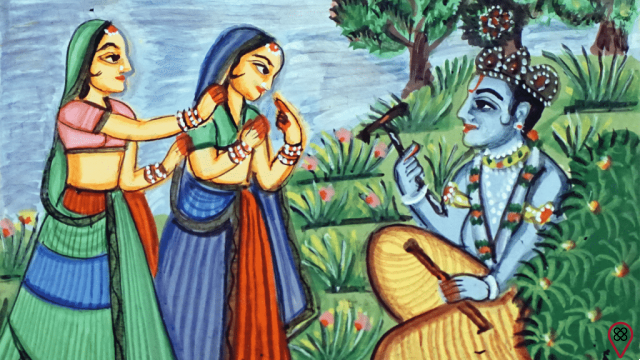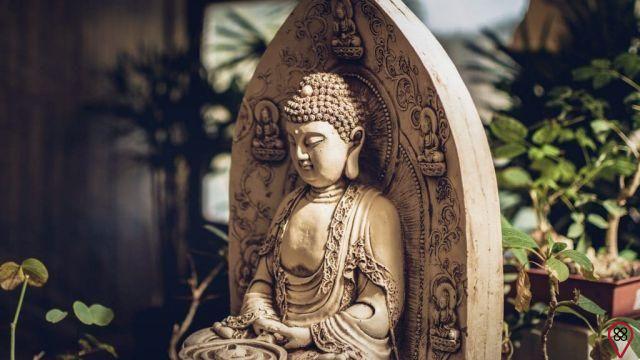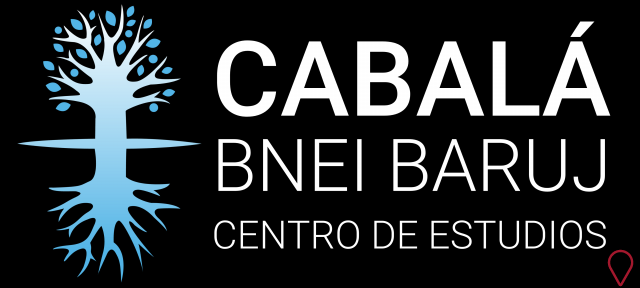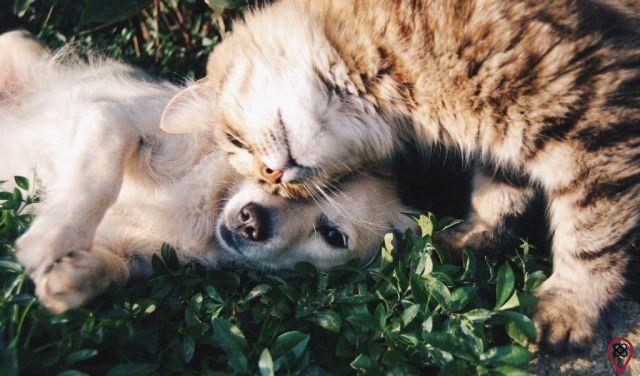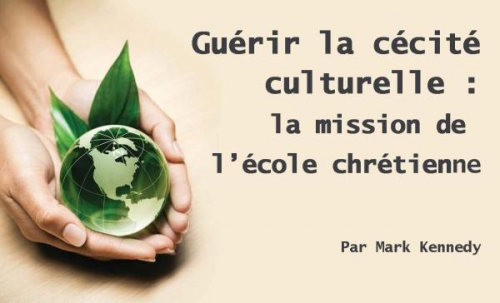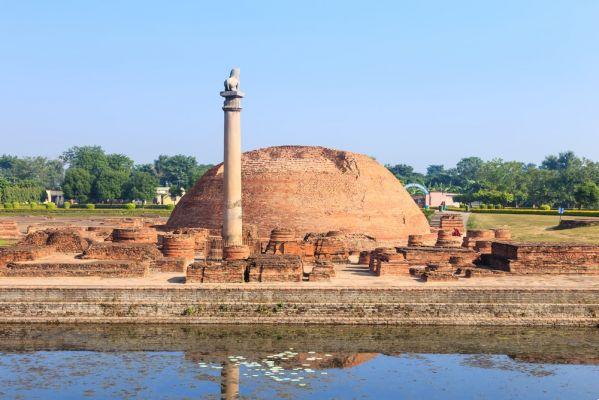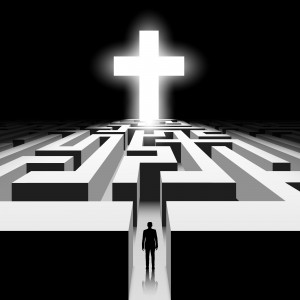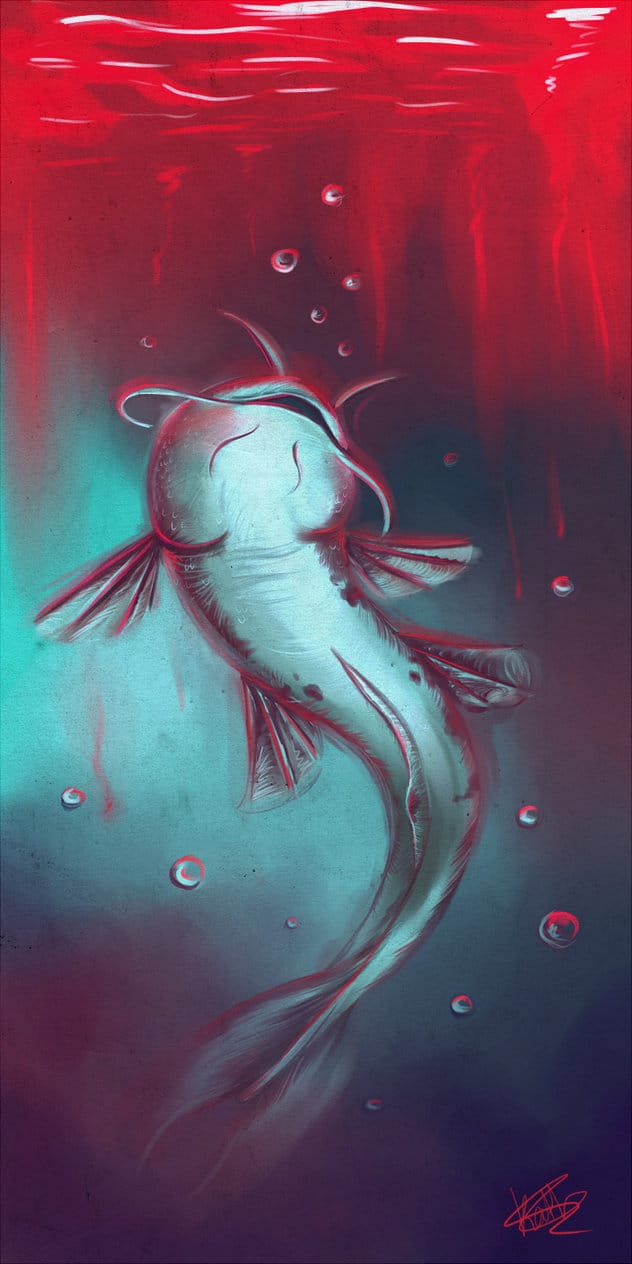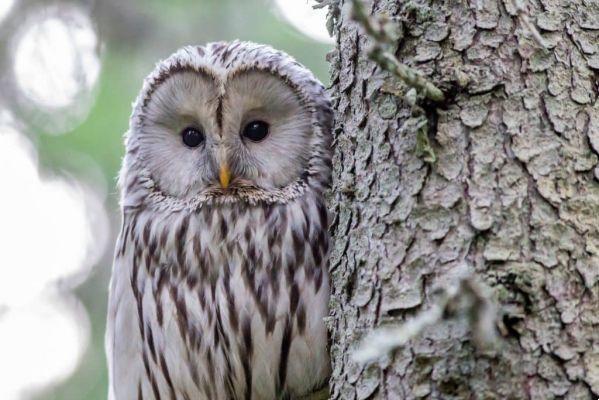Umbanda, in the Kimbundu language, means “magic” or “the art of healing”. Few know, but this religion emerged when a 17-year-old Spanish teenager, Zélio Fernandino de Morais, incorporated the spirit of the Caboclo das Sete Encruzilhadas during a session at a spiritist center, which instructed him to create the new doctrine.
With more than 100 years of existence, Umbanda brings together elements of Candomblé, Kardecist Spiritism and Catholicism. Among its main entities are the god Olorum, the orixás and spiritual guides. Some of the most famous orixás are those of the Yoruba tradition, known as Oxalá, Oxum, Xangô, Yemanja, Obá, Yansã and so on.
The spiritual guides are divided into categories: Caboclos, Pretos Velhos, Exus, Pombas Giras and Erês. At first, this much name makes a knot in our head, right? Which leads us to think: how is the teaching of Umbanda for beginners? How can I know what this doctrine says if I don't even know where to begin?
Within the religion, there is a kind of hierarchy that begins with the abiãs, that is, people who attend the terreiro as assistants and have the desire to join the rituals; and goes to Babalaô, as Pai de Santo is known after 21 years of work and a lot of dedication to Umbanda. Over time, that person who just wanted to know the religion will develop his gifts and become more and more knowledgeable about the practices and ceremonies.
On the other hand, this whole process takes years and can raise several doubts about Umbanda, especially if you don't know it very well. But calm down! Do not give up! Read on and you will discover a lot of interesting information about the doctrine.
Questions about Umbanda
Before starting in Umbanda, some questions are common for those who are not so used to the religion. Because it is a very complex doctrine, which involves beliefs from different origins, it is common for it to cause some confusion and even strangeness because of religious syncretism — that is, the mixing of several beliefs into one.
But the truth is that Umbanda is much simpler than it seems. Below, you can see the questions that everyone has about religion, but doesn't know who to ask. Follow:
What does Umbanda forbid?
In the religious universe, there are some attitudes called precepts, rules that must be respected by its practitioners. In Umbanda, the precepts vary from terreiro to terreiro, but some of them are well known.
Before the meetings — the famous “giras” — the members must not consume alcohol, eat red meat or perform sexual acts. In everyday life, the important thing is to get away from everything that pulls you down the path of evil and/or away from the orixás and your spiritual family.
What do we learn from Umbanda?
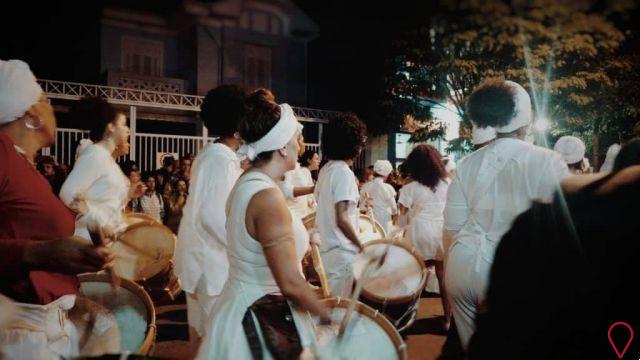
The main advice of religion is to love your neighbor as yourself. Umbanda is a doctrine completely focused on charity, humility, fraternity and spiritual and personal development. The orixás also transmit several teachings related to qualities such as courage, kindness and patience.
types of umbanda
Since the world has been a world, religions have diversified into new strands. In Umbanda, it couldn't be different. There are several types, but let's get to know the main ones:
— White Umbanda (traditional): is the one founded by the medium Zélio Fernandino de Morais, considered the first of all Umbanda. They believe in saints who can be syncretized with orixás, they do not use atabaques and palms and the candles are always white.
— White table Umbanda (Kardecist): heavily influenced by the spiritism developed by Allan Kardec, it is practiced within the centers of this religion.
— Mirim Umbanda (esoteric): created by the medium Benjamin Gonçalves Figueiredo, it brought some changes to the religion, such as the removal of Catholic saints, the organization of the orixás in 7 lines and the creation of a hierarchy for the mediums.
— Popular Umbanda (crusade): worship various saints, orixás, chief guides and lines of work, use drums, music, colored candles and offerings; moreover, it differs from each other in each terreiro.
— Umbanda Omolocô (traced): founded by Tatá Trancedo, it is very close to Candomblé, hence the presence of ritualistic sacrifice and syncretism with Catholic saints.
— Umbanda Almas and Angola (outlined): originating in Angola, highlights the orixás linked to water, such as Iemanjá, Oxum, Nanã and Iansã.
Umbanda is evil?
As we have seen, Umbanda defends the law of loving one's neighbor and doing good. So there is no evil work in this religion. If there is evil, it is not Umbanda. And if they want to convince you otherwise, it's out of pure prejudice.
Want to see? It is common to hear that “umbanda makes macumba”, always in a pejorative tone. Originally, the macumba is nothing more than a percussion instrument that imitates the reco-reco. Over time, more traditional religions ended up using the term to refer to dispatches, that is, offerings made to spirits and entities to obtain a desired favor. As in other religions, these orders can be used against third parties, but no self-respecting Umbanda center would accept this type of work.
What are the seven lines of umbanda?
The lines within Umbanda represent a grouping of spirits dominated by a chief-orixá, who is responsible for a great mission in space. They are: Oxalá (religious), Iemanjá (water people), Xangô (justice), Ogun (demands), Oxóssi (caboclos), Iori (children) and Iorimá (old black people) line. Each one has characteristic goals, songs and rituals.
What is crossing in Umbanda and how is it done?
Crossing is one of the rituals that make up Umbanda. If you go to a tour, you will see that, at times, the mediums or leaders of the meeting make the sign of the cross on the ground, in the air or on their own body. This tradition serves to transform something that is not sacred into sacred, energizing and strengthening you for contact with spirit guides.
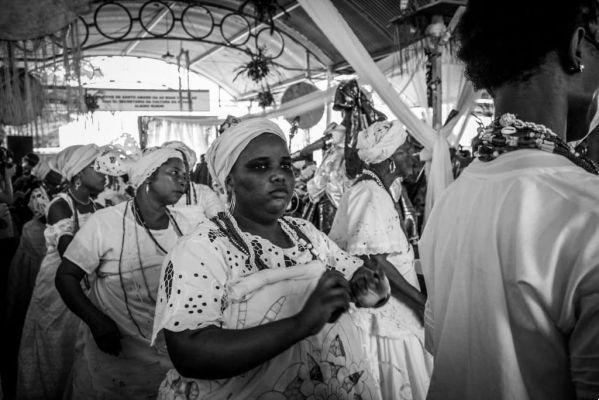
The crossing can vary according to the terreiro or the head guide of the house, but it is usually done with Pemba Branca or Pemba Ralada and some herbs from Amaci. The medium receives the sign of the cross with Pemba in certain points of the body and then has his head washed with Amaci.
How is the initiation ritual in Umbanda?
Like Catholicism, Umbanda has some sacraments that must be followed for a person to actually start religious life. Everything starts with the ritual of making the head, when the novice stays away for up to 7 days to prepare the mind for contact with his orisha.
Then comes the abiã, which is when he chooses the clothes for the passage. In sequence, the bolanã is made, a spiritual cleansing that separates him from everything that is profane.
After 21 days, the Oruncó party takes place, where the initiate is presented to everyone. The next day, another party takes place: the erê's grocery store, which serves for him to play, stimulate his childish conscience and receive gifts. At the end of this whole process, the initiate starts to live with his orixá, following precepts that range from the use of characteristic clothes to respect for certain behaviors linked to the entity.
What is the first step to enter Umbanda?
The first thing you need to keep in mind to join Umbanda is your goals. Rest assured that you are joining this religion for the right reasons, not out of sheer excitement or vanity. Think about whether you really want to commit to rituals and dedication to the spiritual life, which go far beyond wearing white and passively participating in the cute ones.
Visit a terreiro, take care of the father or mother of saint of that house and talk to people who are already part of this universe. Understand how Umbanda works and then show your interest to practitioners of this religion.
How is baptism done in Umbanda?
The initial steps within Umbanda depend a lot on performing baptism, one of the most important sacraments of the doctrine. It is through him that the initiate connects for the first time with the entities and the orixás. The ritual can take place in a terreiro or in a natural source of water, such as a river, a waterfall or the sea.
During baptism, the person receives spiritual godparents (orixás) and incarnates — other Umbanda practitioners who are responsible for introducing them to the paths of religion with the priests.
Curiosities of Umbanda
Now that you already have basic knowledge about Umbanda, let's discover some cool facts about this religion so complete? See below:
1 — Umbanda believes in reincarnation
We have already learned that Umbanda was formed from the junction of several other religions. As a consequence, reincarnation is one of the beliefs that was brought in as part of the doctrine. According to Umbanda practitioners, disembodied spirits are among human beings to give us messages and help us, but the only ones capable of doing this are those who are already highly evolved and who no longer need to incarnate.
It is important to understand that for this religion there are several spiritual planes. In this context, the Earth appears as one of the stages of the cycle of evolution responsible for reincarnation. In other words, it is on this material plane that we live that spirits improve themselves in relation to experiences in the past with the help of other more advanced spirits in the evolutionary process.
2 — Catholic images in Umbanda date back to slavery
Religious syncretism, despite being a beautiful way to mix different beliefs without prejudice, often has roots in dark moments in history. At the time of slave colonization, the masters displayed Catholic images inside the slave quarters to “protect” themselves against the Umbandistic rituals performed by the slaves. Hence the correlation between several Christian saints with the entities worshiped in Umbanda.
Today, this connection is very present around the terreiros. Iemanjá, for example, is commonly associated with Nossa Senhora da Conceição, as well as Santa Bárbara. Xangô, São Jerônimo and São João. Ogun, Santo Antônio and São Jorge. I wish, of course, to the figure of Jesus Christ himself, in view of his role as the creator of humanity.
3 — There are several types of tours
Giras, or Umbanda meetings, serve to bring together the spirits of each line through the incorporation of mediums. They have dances, prayers and passes and are classified into three types: development, work and festive.
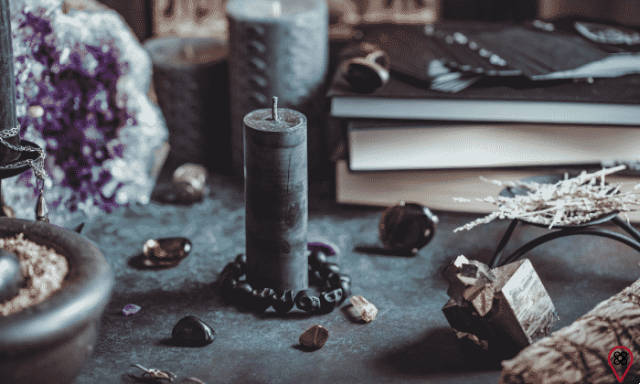
The development tours are more focused on the evolution of mediums, so that they understand the importance and responsibility of their skills in incorporation.
The work stations are open to the public and aim to meet the different needs of those who seek them. Finally, festive tours are made to honor spirits and orixás.
4 — Umbanda does not work with animal sacrifices
Remember that story that if you do wrong, it's not Umbanda? So it is. Although the religion has some elements of Candomblé, a doctrine that practices the slaughter of animals for certain rituals, this is not a practice accepted by Umbanda practitioners.
As advocated by the founder, Zélio Fernandino de Moraes, the most important thing is the preservation of all forms of life, so it would be totally contradictory to kill innocent animals for religious purposes.
5 — Is Exu a demon?
Not. Exu is not a demon. In fact, he is a guardian and messenger. The objective of this orixá is to protect the terreiros and houses of mediums and to bridge the gap between human beings and the divine plan, ensuring the application of the law in the spiritual realm.
You may also like
- Meet the wise Umbanda guide, Preto Velho
- Learn the fundamentals of Umbanda
- Umbanda: what is real?
- Umbanda: mix of cultures
- Discover 8 facts about the queen of the seas, Iemanjá
It is very common for him to be associated with demons because of prejudice and confusion with other religious beliefs. In Umbanda, Exu has the energetic vibration of a spirit that has already experienced very bad situations, but today wants to promote only Light. That's why he works in depth with superfluous and material issues of humanity in order to lead it to the good. In this process, he ends up acting as a creator of stimuli that activate and treat human emotions.
Exu is part of Umbanda's Left Line, that is, it works by absorbing the imbalances and negativity of this plan so that the Right Line can restructure it. Ruled by the mystery “Neutral Throne”, it promotes neither good nor evil, but balance.
6 — What does the act of headbanging mean?
“Hitting the head” or the attitude of bringing the head to the ground is common in many religions. It represents human submission to divine power, recognizing oneself as a limited being in the face of spiritual greatness. It is a way of showing respect, delivery, gratitude and humility in front of the orishas, guides, entities and even the fathers or mothers of saints. In these moments, the congá (or altar) and the points (or songs) are widely used to move such energies.

In the same sense is the practice of being barefoot, in constant contact with our ancestors. Originating in the African tradition, leaving shoes outside is also a way of preventing mediums from carrying charged energies outside the terreiro, protecting them.
7 — Umbanda has no discrimination
In this religion, there are no exchanges of favors or goods. It serves anyone, from the poorest to the richest, regardless of race, color, sexuality or gender. People who follow this doctrine are obligated to attend to all who seek help. Love and respect are the great pillars of Umbanda.
So, if you know someone charging to do work, be wary: they are probably malicious people who want to take advantage of an entire belief system for their own benefit.
However, considering that Pais and Mães de santo usually dedicate themselves 24 hours a day to the spiritual mission, they need resources to keep the terreiro in operation. Hence the charge, for example, of monthly fees between regulars, which must be combined and agreed in the fairest way possible.
8 — Everyone has mediumship
When participating in a tour, you will realize that people who already attend that terreiro have the ability to incorporate spirits. Umbanda defends that we all have this capacity, to a lesser or greater degree; what changes is how evolved your mediumship is. Even if you have never felt this power in your life, you have it and can develop it through the teachings of Umbanda.
In addition, there are several ways to express this power throughout your contact with religion. Not only incorporation, but psychography, psychophony, astral projection, clairvoyance and several other modalities of contact with the spiritual world can arise among Umbanda practitioners.
9 — What do the candles represent?
In Umbanda rituals, there are several candles of different colors. This tradition comes from the influence of the Catholic religion, which uses a candle to represent the members of the holy trinity — the wick as Jesus, the wax as God the Father, and the flame as Spirit.

In Umbanda, each color represents an orixá. For example, the Exus are offered black candles; Oxalá, white; the Ochosi, green; Xango, brown; the Ogun, red; the Iemanjá, light blue; the Oshun, royal blue; the Iansã, yellow; Nanã, purple; and Ibeji, roses.
When using them, keep in mind what each color means and light it in a calming environment, focusing on transmitting your energy to ensure the request is fulfilled.
10 — Umbanda’s paradise is Aruanda
Like almost every religion, Umbanda also has the belief in a kind of paradise, or rather, a place of passage to the divine plan. It is Aruanda, a city of ethereal light that is in a transitional spiritual dimension in the Earth's ionosphere, that is, in a part of our planet's upper atmosphere. The origin of the name Aruanda is African and represents a place to which one wants to return one day to rest and enjoy the pure light of goodness present there.
If you have read this far, you can already say that you know more about Umbanda than most people. The knowledge gathered in this article is only a part of the immense amount of teachings promoted by religion. Allow yourself to have a closer contact with this profound doctrine and seek even more knowledge about Umbanda beliefs!




